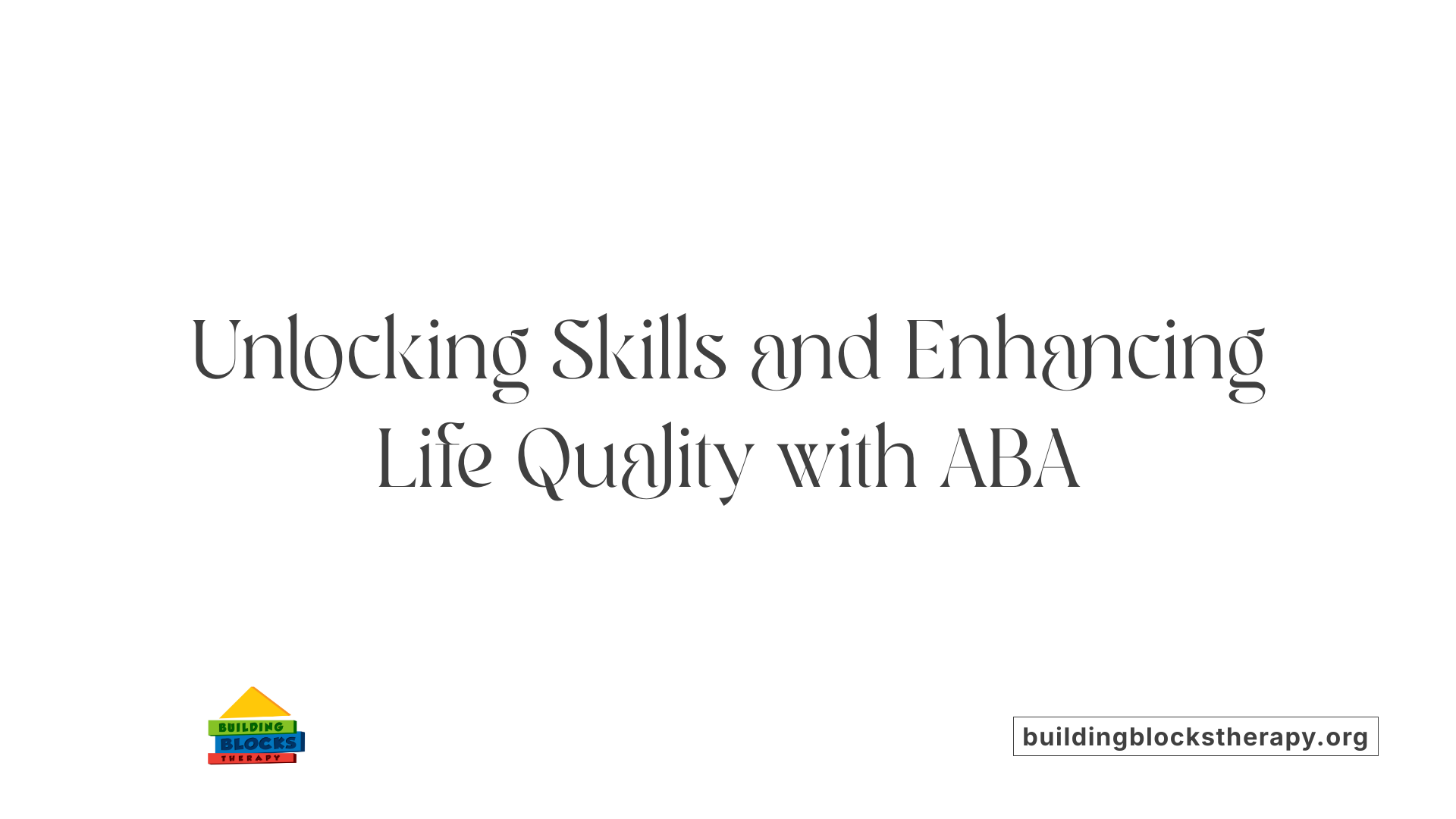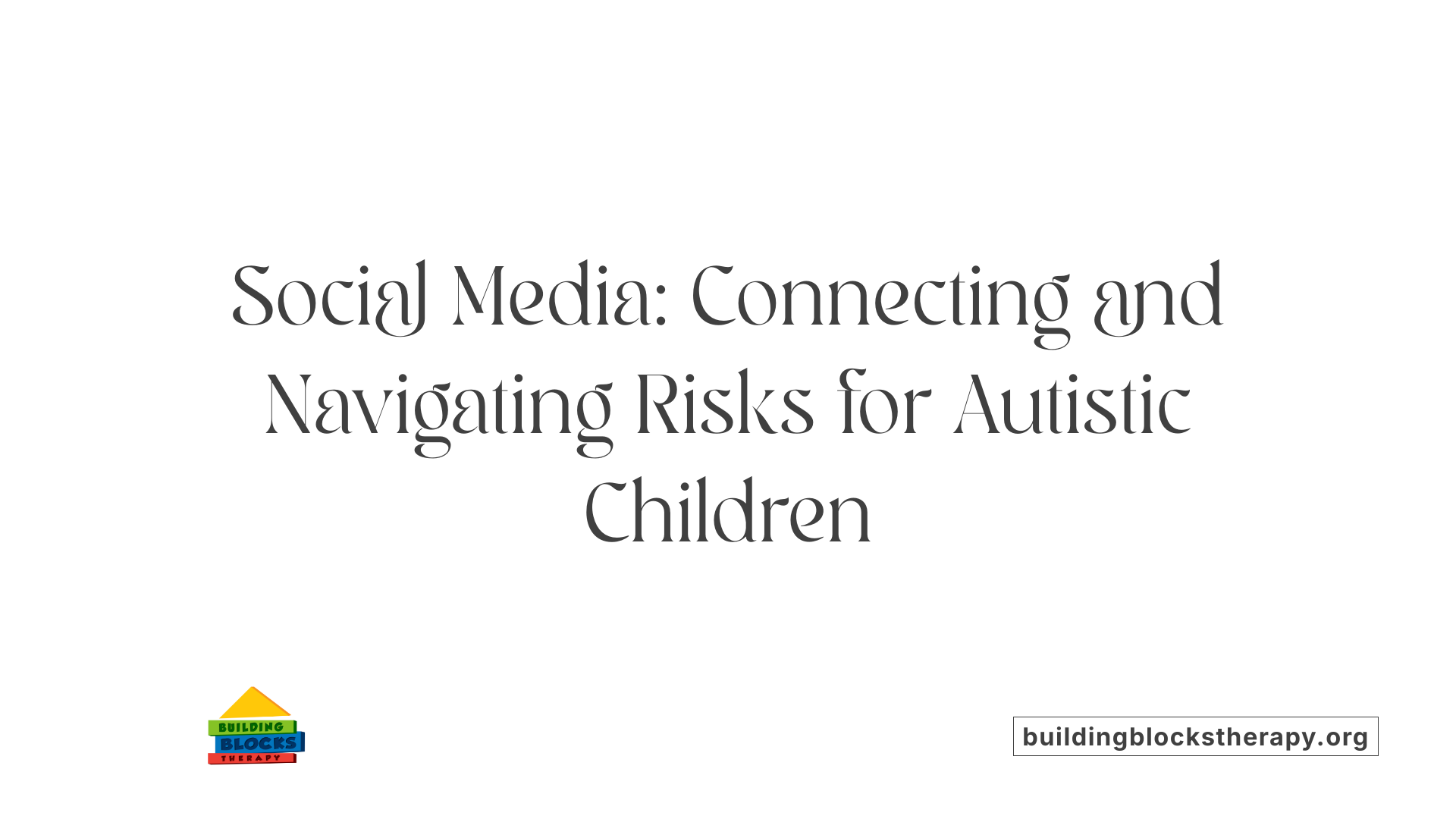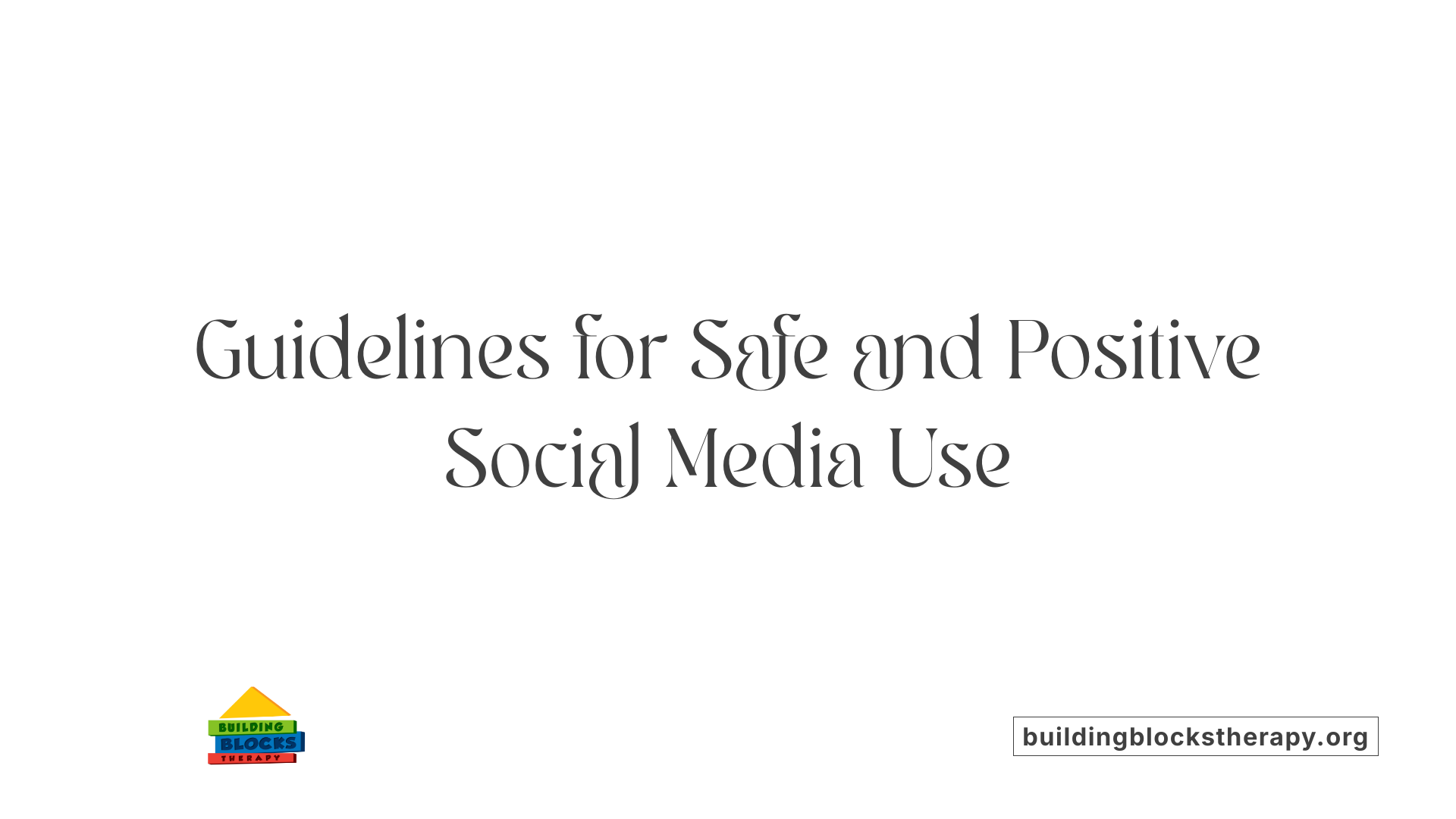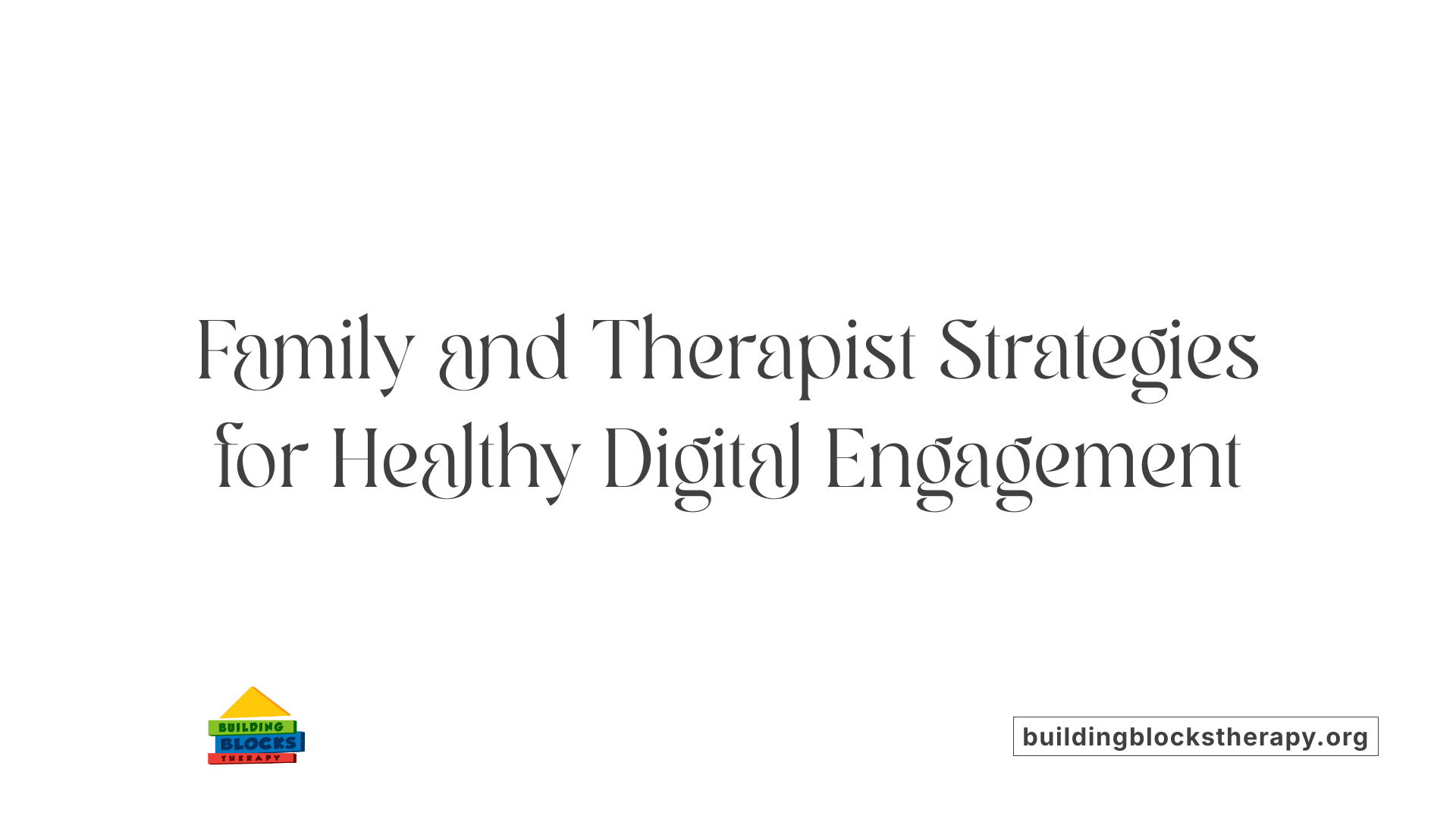Using Social Media with Children with Autism
Navigating Social Media Safely and Effectively with Children on the Autism Spectrum

The Intersection of Autism, ABA Therapy, and Social Media
In today’s digital age, social media is a pervasive part of life for children and adolescents, including those with autism spectrum disorder (ASD). While social media offers valuable opportunities for connection, learning, and self-expression, it also presents unique challenges and risks for autistic children. This article explores how Applied Behavior Analysis (ABA) therapy supports children with autism in developing social and communication skills that can enhance their safe and meaningful social media use. It also examines strategies for families, caregivers, and professionals to effectively guide children with autism as they navigate the complex social media environment.
Understanding Applied Behavior Analysis (ABA) Therapy and Its Role in Autism Support
What is Applied Behavior Analysis (ABA) therapy?
Applied Behavior Analysis (ABA) therapy is an evidence-based treatment grounded in the science of learning and behavior. It aims to improve helpful skills such as communication, social interaction, daily living, academics, and motor skills, while reducing harmful or problematic behaviors in individuals with autism.
ABA programs are highly individualized, designed by qualified behavior analysts (BCBAs), and often involve techniques like positive reinforcement, data collection, and behavior analysis. The therapy can be delivered in various settings, including at home, school, or community.
Benefits of ABA for children with autism
Interventions based upon ABA are considered best practice for children with autism spectrum disorder (ASD). ABA helps promote independence, enhances social skills, and improves the overall quality of life. Specifically, naturalistic teaching approaches—embedded in everyday activities such as play, art, and mealtimes—facilitate the generalization and maintenance of skills.
Teaching requesting (manding) is a primary social communication skill targeted in ABA interventions. This focus accelerates later verbal communication and reduces problematic behaviors. For example, developing eye gaze as a form of mand is significant in early communication development, helping cater to social interactions and learning opportunities.
Settings and delivery of ABA therapy
ABA therapy can be delivered intensively over sustained periods, typically 20-40 hours per week, within multiple settings—home, school, or community. School-based ABA therapy promotes inclusion and reduces stigma by helping children develop communication, social interaction, and self-regulation skills in their educational environment.
In-home ABA therapy offers a natural and comfortable setting for children, making it accessible and convenient for busy families. Additionally, telehealth models show promise for increasing access, particularly through parent and caregiver training, which is crucial in areas with shortages of trained behavior analysts.
Common ABA methods and techniques
Key methods include the use of positive reinforcement, careful data collection, and behavioral analysis. Naturalistic teaching embeds learning into typical daily routines to promote skill generalization.
Mand training focuses on communication initiation, while eye gaze interventions target early social communication skills. Parent coaching is also a critical strategy to ensure effective implementation and maintenance of ABA approaches in natural settings.
| Aspect | Description | Setting Examples |
|---|---|---|
| Definition | Science-based therapy to improve behavior and skills | Home, School, Community |
| Delivery | Individualized, 20-40 hour weekly intensity | In-school ABA, In-home therapy |
| Techniques | Positive reinforcement, mand training, naturalistic teaching | Parent training, Telehealth |
| Benefits | Improved communication, social skills, independence | Inclusion, reduced stigma |
Benefits of ABA Therapy for Children with Autism

How does ABA therapy benefit individuals with autism?
Applied Behavior Analysis (ABA) therapy is widely regarded as a best practice for supporting children with autism spectrum disorder (ASD). It works by systematically encouraging positive behaviors while reducing harmful or challenging ones through evidence-based reinforcement techniques.
ABA targets critical skills like communication, social interaction, self-care, and academic development. One major focus is enhancing social communication, including teaching requesting skills (manding), which helps accelerate verbal communication and can reduce problematic behaviors. The therapy is flexible and tailored to each child's individual strengths, needs, and interests. It can be delivered in diverse settings, including at home or school, ensuring accessibility and personalized support.
ABA fosters independence and life skills development, improving children's ability to participate in everyday activities. Naturalistic teaching methods embed learning into routine events such as play, mealtimes, or art, promoting generalization and maintenance of skills.
Extensive research and endorsements from health organizations validate ABA's effectiveness, which translates into better quality of life and increased inclusion for children with autism. Parental involvement and training, often facilitated via telehealth, bolster these gains and empower families to support their children's progress.
In essence, ABA therapy offers a comprehensive, evidence-backed approach that nurtures essential skills, supports social integration, and enhances overall well-being for children with ASD.
Who Provides ABA Therapy and How Is It Delivered?
Professional qualifications of ABA providers
ABA therapy is typically delivered by professionals with specialized training in behavior analysis. These include Board Certified Behavior Analysts (BCBAs), who develop and oversee treatment plans; Assistant Behavior Analysts (BCaBAs), who support implementation under supervision; and Registered Behavior Technicians (RBTs), who provide direct one-on-one therapy to children with autism spectrum disorder (ASD). These individuals ensure that interventions are evidence-based and tailored to each child’s needs.
Settings for therapy delivery including in-home, school, and clinics
ABA therapy can be delivered across various settings to maximize effectiveness and accessibility. Many families opt for in-home ABA therapy, which creates a natural and comfortable environment for the child and supports generalization of newly acquired skills. Schools also provide ABA within educational programs, promoting social inclusion and helping children develop communication, social interaction, and self-regulation skills alongside their peers. Additionally, specialized ABA clinics offer structured sessions with access to multidisciplinary teams. This flexibility in delivery settings helps meet the diverse needs of children and families.
Role of family involvement and insurance coverage
Family participation is a cornerstone of successful ABA therapy. Caregivers receive training in naturalistic teaching strategies, empowering them to embed communication and behavior-support techniques in everyday activities like play and mealtimes. This collaborative approach facilitates skill maintenance and generalization. Insurance policies, including private plans and government-funded programs such as Medi-Cal, often cover ABA therapy when medical necessity is established. Coverage helps ensure that families can access consistent, high-quality services offered by licensed providers. Overall, the combined efforts of trained professionals and engaged families form the foundation of effective ABA intervention.
Common ABA Therapy Methods Used to Support Social Communication
What methods are commonly used in ABA therapy?
Applied Behavior Analysis (ABA) employs a variety of evidence-based techniques designed to promote meaningful behavior change, especially in children with autism spectrum disorder. Common methods include:
- Positive Reinforcement: Rewarding desired behaviors to increase their occurrence.
- Discrete Trial Training (DTT): A structured teaching method breaking skills into small, achievable steps with clear prompts and consequences.
- Modeling, Prompting, and Fading: Demonstrating behaviors, providing assistance, and gradually reducing prompts to foster independence.
Naturalistic Teaching and Manding
Naturalistic teaching integrates learning opportunities into everyday activities like play, art, and mealtimes. This approach enhances generalization and maintenance of skills. Teaching requesting behaviors, known as manding, is a primary focus because it supports early social communication development and can reduce problematic behaviors by giving children ways to express needs. Eye gaze as a form of mand also plays a critical role, as early eye contact is foundational for social interaction and learning.
Focus on Eye Gaze and Social Attention
ABA therapy places special emphasis on developing social attention through eye gaze. This is vital since atypical eye contact in early development can negatively impact social learning opportunities. Interventions often include strategies to encourage and reinforce appropriate eye gaze, which supports communication growth and social engagement.
By combining structured teaching like DTT with naturalistic methods centered on manding and social attention, ABA therapy comprehensively supports social communication development in children with autism. This multifaceted approach aims for lasting improvements that transfer beyond therapy sessions into real-world interactions.
Integrating Naturalistic Teaching to Enhance Communication Skills

Embedding teaching in everyday activities
Naturalistic teaching incorporates learning opportunities into daily routines and play, such as during art, mealtimes, or free play. By blending instruction seamlessly into familiar contexts, children with autism spectrum disorder (ASD) can better generalize and maintain newly acquired skills across settings. This hands-on approach contrasts with more structured teaching sessions and promotes ongoing engagement.
Emphasizing manding/requesting
A primary focus of naturalistic interventions is teaching manding, or requesting behaviors. This is an essential social communication skill that encourages children to express their needs and preferences effectively. Early mastery of manding often accelerates the development of verbal communication and can reduce challenging behaviors by providing an appropriate outlet for desires and frustrations.
Importance of eye gaze in early interventions
Eye gaze functions as a powerful nonverbal form of manding and is critical in the early stages of communication development. Early atypical eye contact can impede social interaction and learning opportunities for children with ASD. Naturalistic teaching targets improving eye gaze as a way to foster social engagement and lay the groundwork for future language skills.
Parent and caregiver training for naturalistic methods
Training parents and caregivers in naturalistic teaching strategies is vital, especially in areas with limited access to trained behavior analysts. Empowering caregivers to embed teaching moments in everyday life extends intervention reach and effectiveness. Additionally, telehealth has emerged as a promising avenue for delivering such training remotely, showing high parent fidelity in implementing strategies and encouraging child progress.
The Role of Telehealth in Expanding ABA Parent Training Accessibility
How effective is telehealth delivery for ABA parent training?
Telehealth has emerged as a promising method to increase accessibility to applied behavior analysis (ABA) parent training, particularly in regions lacking trained behavior analysts. Studies indicate that telehealth can successfully deliver ABA-based instruction, enabling parents to learn and apply naturalistic teaching strategies within the home environment. This approach leverages video conferencing and digital platforms to coach caregivers effectively despite geographical barriers.
Have there been improvements in parent implementation fidelity?
One significant advantage of telehealth parent training is the notable improvement in parental fidelity to ABA techniques. Research shows parents can achieve high levels of implementation fidelity when guided remotely, effectively embedding teaching moments into everyday activities such as play and mealtimes. Enhanced fidelity contributes to better generalisation and maintenance of children’s communication skills, critical for ongoing developmental progress.
What are the outcomes on child communication?
While telehealth interventions generally improve parental skills, child communication outcomes have been variable. Some studies report increased eye gaze, requesting behaviors (manding), and positive affect during interactions following parent training. However, results across different trials show mixed efficacy, suggesting that child responses may depend on individual circumstances, intervention design, or degree of parental engagement.
What challenges and opportunities exist beyond the US context?
Most research to date on telehealth-delivered ABA parent training originates from the United States, with limited data from European or other international settings. This reveals a research gap and an opportunity to explore telehealth's adaptability across diverse cultures and healthcare systems. Challenges such as language differences, technology access, and local training standards must be addressed to harness telehealth’s full potential globally. Expanding studies internationally can help establish best practices tailored to varied populations and improve global access to ABA interventions.
Social Media as a Tool for Connection and Risks for Autistic Children

How does social media support connection and community for autistic children?
Social media platforms enable autistic young adults and children to find and engage with communities that share their interests and experiences. This immersion helps foster a sense of belonging and connection to resources and peers. Through participation in groups centered on hobbies, advocacy, and shared challenges, autistic individuals can enhance social interaction and access valuable support networks.
What are the risks of using social media for autistic children?
While social media offers opportunities, autistic children face unique risks online. They experience higher rates of harassment and harm compared to their neurotypical peers. Common traits such as literal interpretation of social media instructions and labels can lead to misunderstandings and vulnerability in digital interactions. The unpredictability of social cues and ambiguous feedback on platforms can cause stress and mental health challenges.
What specific challenges arise from autistic traits during social media use?
Many autistic users engage intensely with social media, which can amplify feelings of anxiety when presented with conflicts or unclear responses. Their tendency to follow prompts literally may expose them to scams or misinformation. Additionally, difficulty interpreting implicit social rules on social media can complicate safe navigation of these platforms.
How do support networks help mediate online safety for autistic children?
Families, caregivers, and care staff play a critical role in supporting autistic children’s digital safety. Immediate, real-time intervention when issues arise provides more effective protection than delayed responses. Ongoing communication about online safety, clear rules, and digital literacy education empowers autistic users to use social media more safely and confidently. Specialized courses on social media literacy have shown promising results in teaching autistic adults about privacy, misinformation, and online norms, highlighting the importance of structured support.
Strategies to Support Safe and Positive Social Media Use for Children with Autism

Immediate Online Safety Mediation
Prompt responses to online challenges are essential for children with autism using social media. Immediate intervention can effectively address incidents like cyberbullying or misinterpretations before they escalate. Real-time support helps children navigate difficult interactions and reduces stress.
Ongoing Conversations About Safety and Rules
Regular discussions about online safety, expected behaviors, and platform rules empower children to understand boundaries and recognize potential risks. Clear guidelines help foster responsible use and build confidence in managing their social media experiences.
Digital Literacy Education and Protective Strategies
Educational efforts focus on teaching children to spot fake profiles, misinformation, and privacy concerns. Tailored digital literacy programs mitigate risks inherent to autism traits, such as literal interpretation of interface labels, which may expose children to online harm. Protective strategies include teaching how to verify information and maintain privacy.
Support from Family and Care Staff
Family members and caregivers play a pivotal role in overseeing social media use. By providing guidance, modeling safe online behaviors, and mediating conflicts promptly, they create a safer digital environment. Their involvement enhances digital literacy and helps children develop resilience to online stressors.
Educational and Advocacy Uses of Social Media in the Autism and ABA Community
Sharing Success Stories and Raising Awareness
Social media platforms such as Instagram, Facebook, Twitter, and TikTok have become vital spaces for families, professionals, and advocates involved in autism and Applied Behavior Analysis (ABA) therapy. These platforms provide opportunities to share success stories, showcase positive behavioral changes, and highlight progress made by children receiving ABA interventions. Sharing these personal and professional experiences helps raise public awareness about the benefits of ABA therapy and fosters a sense of hope among families.
Using Hashtags Like #ABAtherapy to Build Supportive Communities
Hashtags like #ABAtherapy, #BehaviorAnalysis, and #ABAstrong play a significant role in connecting individuals within the autism community. These digital tags allow users to find relevant content easily, create networks of support, and access resources related to ABA therapy. The communities formed around these hashtags not only provide encouragement but also facilitate the exchange of practical advice and insights into effective intervention strategies.
Parents and Professionals Educating the Public
Parents and behavior analysts frequently use social media to educate the public about autism and ABA. By posting educational content—such as explanations of behavioral principles, common myths, and evidence-based practices—they help demystify ABA therapy. This educational outreach contributes to a more informed public and encourages acceptance of autism interventions.
Combating Stigma Through Social Media Engagement
Active engagement on social media helps normalize ABA therapy and challenge negative stereotypes attached to autism. Families sharing authentic stories and therapists showcasing positive outcomes promote empathy and understanding. This online advocacy reduces stigma, making it easier for individuals and families to seek support without fear of judgment.
| Aspect | Description | Impact on Autism and ABA Community |
|---|---|---|
| Sharing Success Stories | Posting personal and professional progress with ABA | Inspires hope and illustrates effectiveness |
| Hashtags (#ABAtherapy, #ABAstrong) | Facilitates community building and resource sharing | Creates supportive networks and easier access to information |
| Educational Content | Explaining ABA principles and debunking myths | Raises awareness and public understanding |
| Stigma Reduction | Promoting authentic stories and positive outcomes | Encourages acceptance and reduces judgment |
Addressing Mental Health and Behavioral Challenges Linked to Social Media Use
How is excessive social media use correlated with anxiety and depression?
Excessive time spent on social media has been linked to higher rates of anxiety and depression among youth. The constant exposure to online content, pressures to compare oneself to others, and the addictive nature of social platforms can contribute to feelings of stress and low mood.
What are the effects of cyberbullying and body image issues?
Cyberbullying can occur anytime, causing severe psychological effects such as increased anxiety and reduced self-esteem. Additionally, exposure to idealized images on social media often leads to body image concerns, potentially triggering disordered eating and further harming mental health.
How do social media habits disrupt sleep and lead to addiction?
Late-night screen time disrupts natural sleep patterns, negatively impacting mental well-being. Furthermore, social media can foster dopamine-based addiction, resulting in compulsive use that interferes with daily activities and emotional regulation.
How does pediatric behavioral therapy support children facing these challenges?
Pediatric behavioral therapy offers invaluable support for children and adolescents dealing with mental health issues related to social media. Therapists provide interventions such as psychoeducation, communication skills training, goal-setting, and guidance on establishing healthy boundaries and digital mindfulness. These strategies help families manage social media use responsibly and reduce negative effects on mental health.
| Challenge | Impact | Therapeutic Approach |
|---|---|---|
| Excessive social media use | Anxiety, depression | Psychoeducation, goal-setting |
| Cyberbullying | Low self-esteem, anxiety | Communication skills training, family therapy |
| Disrupted sleep | Reduced mental health, impaired functioning | Behavior intervention, establishing screen-time rules |
| Dopamine-based addiction | Compulsive behavior, daily life interference | Digital mindfulness, boundary setting |
Therapeutic and Family Strategies for Balanced Social Media Engagement

Establishing social media guidelines and rules
Creating clear and consistent guidelines for social media use is essential for families, especially when supporting autistic individuals. Therapists often help families set boundaries around screen time, acceptable content, and online behavior. These rules provide structure and help prevent risks like cyberbullying or compulsive use. For example, families might agree on specific times for social media use or introduce rules about whom to connect with online.
Promoting digital mindfulness and offline activities
Digital mindfulness practices, such as mindful scrolling and scheduled digital detoxes, encourage users to be aware of their social media habits and reduce stress related to excessive use. Therapists recommend incorporating offline activities like family game nights, outdoor play, and creative hobbies to strengthen family bonds and counterbalance screen time. These activities not only provide healthy alternatives but also foster face-to-face communication and emotional connection.
Using psychoeducation and communication skills training
Psychoeducational resources inform families about the impact of social media on mental health and child development. Communication skills training helps individuals express concerns, navigate social interactions online, and recognize risks such as misinformation or online harassment. Families benefit from ongoing conversations about online safety, digital literacy, and responsible use, which therapists facilitate to empower both caregivers and autistic individuals.
Therapists’ role in ongoing support and goal-setting
Therapists play a vital role in supporting families through continuous guidance and personalized goal-setting. They help families develop SMART goals related to social media use, promote digital mindfulness, and mediate online safety. Through family therapy and tailored interventions, therapists ensure that strategies evolve with the family’s needs, enhancing both safety and positive engagement in digital spaces.
Fostering Empowered and Safe Social Media Use for Children with Autism
Social media can be a powerful platform for autistic children to explore interests, connect with others, and develop social skills. However, the unique challenges they face necessitate thoughtful guidance rooted in evidence-based interventions like ABA therapy. By combining naturalistic teaching, parent training—including via telehealth formats—with digital literacy efforts and strong family support, children with autism can benefit from safer and more enriching social media experiences. Ongoing advocacy and education through social media further help dismantle stigma and build inclusive communities. Ultimately, with collaborative efforts from therapists, families, and communities, children with autism can navigate the digital world confidently, fostering social connection, creativity, and well-being.
References
- The impact of a telehealth platform on ABA-based parent ...
- The Benefits and Challenges of Using Social Media
- School-Based ABA Therapy and Social Media in Fighting ...
- Pediatric Behavioral Therapy: Managing Social Media's ...
- Effects of Social Media on Child Development
- Access to ABA Therapy
- Who can provide ABA therapy?
- Applied Behavior Analysis (ABA)
- Applied Behavior Analysis (ABA)
- Applied Behavior Analysis (ABA)





